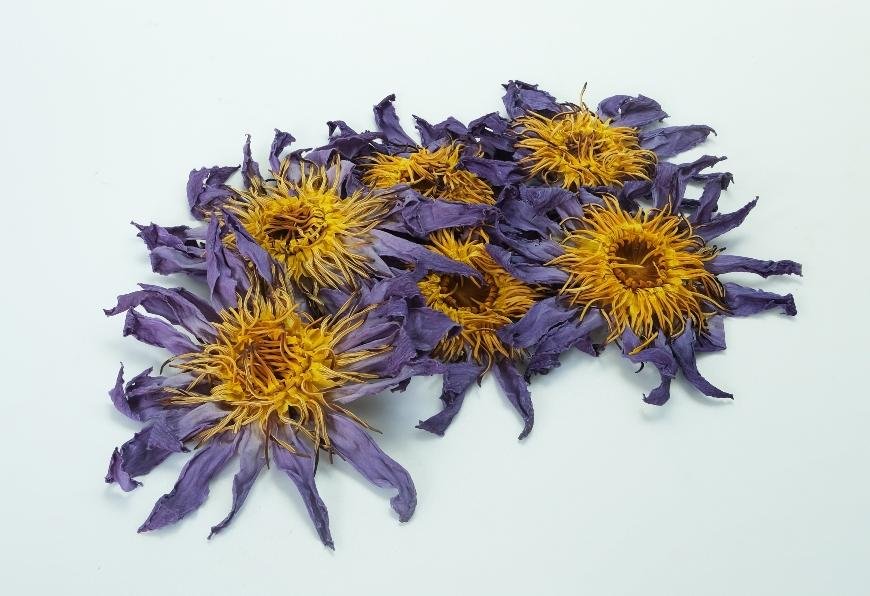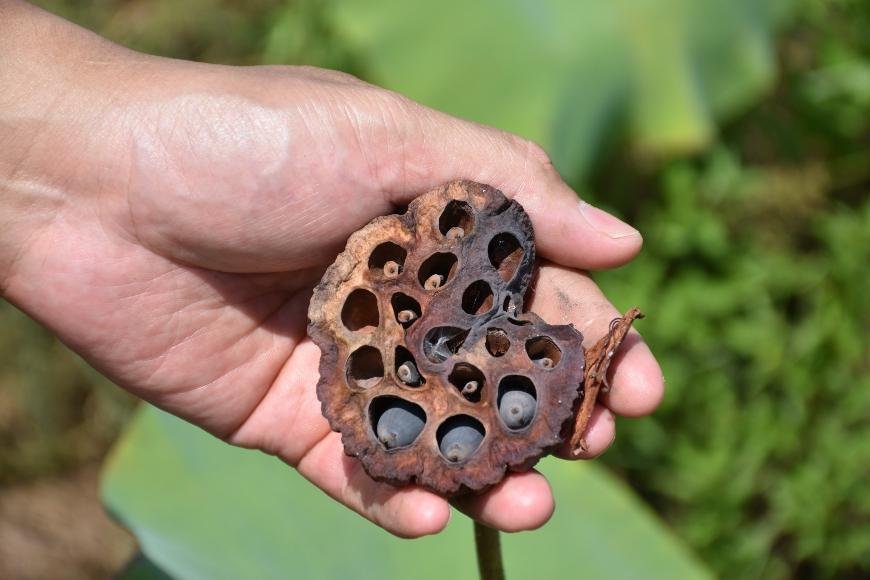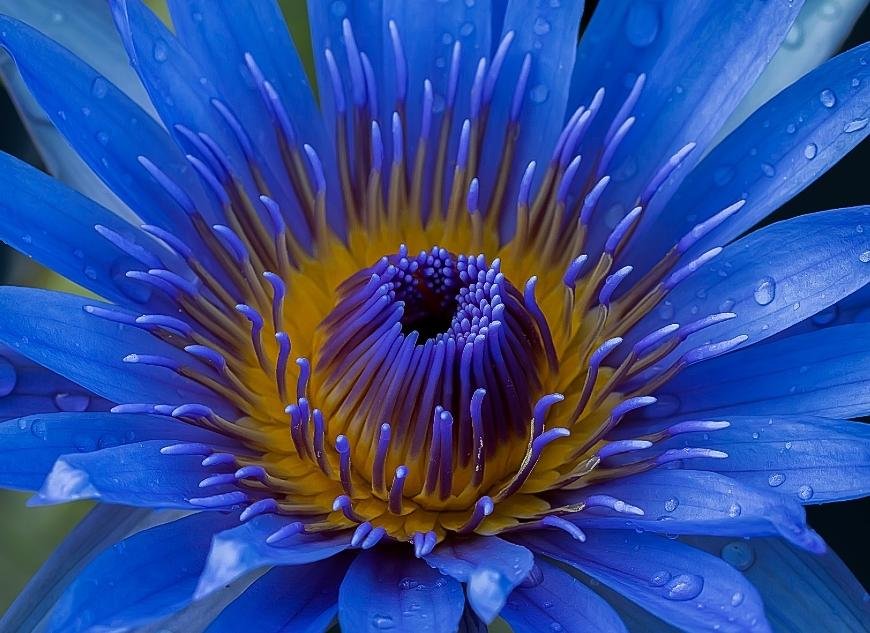How to Extract Blue Lotus
Discover how to extract Blue Lotus with our beginner's guide, covering the step-by-step process, essential tools and storage tips for this sacred blue lily.

Are you intrigued by the mystical properties of the blue lotus flower and wondering how to extract blue lotus? You're in luck! In this blog post, we will explore the mystical properties of the blue lotus flower and provide a comprehensive guide on extracting its essence to access its powerful benefits.
The blue Egyptian lotus, also known as the blue water lily or sacred blue lily, has been revered for centuries due to its various uses in traditional medicine and spiritual practices. By learning how to extract blue lotus, you'll be able to harness these powerful benefits yourself.
In the following sections, we will cover everything from understanding why people choose to extract this enigmatic flower to outlining a step-by-step process that ensures optimal results. Additionally, we'll discuss proper storage techniques so your extracted elixir remains potent for an extended period. So sit back and prepare for an enlightening journey into the captivating realm of blue lotus extraction.
Table of Contents:
- Why Extract Blue Lotus?
- What You Need to Extract Blue Lotus?
- Step-by-Step Process for Extracting Blue Lotus
- Storing Your Extracted Blue Lotus
- FAQs in Relation to How to Extract Blue Lotus
- Conclusion
Why Extract Blue Lotus?
Extracting Blue Lotus is a process that can be used to produce a more concentrated form of the plant’s active ingredients. This makes it an attractive option for young adults between 20 and 30 years who recreationally grow and take drugs, as they are able to get more bang for their buck with this method.
Solvents like alcohol and acetone are often used to isolate the active compounds from Blue Lotus, as they break down cell walls and release these into a concentrated solution. Solvents can be employed to destroy the cell walls of the Blue Lotus plant, allowing its active elements to dissolve and accumulate in a different vessel. The resulting extract has a much higher concentration than what you would find in the original plant material, making it more potent and effective when consumed.
Another benefit of extracting Blue Lotus is that it allows users to create custom blends with other herbs or plants. By combining different extracts together, users can tailor their experience to fit their individual needs and preferences without having to buy multiple products separately. This allows recreational drug users to explore a variety of mixtures, so they can discover the one that is optimal for them without spending an exorbitant amount on trial and error purchases.
Finally, extracting Blue Lotus also allows users to store their product safely over time without worrying about degradation due to environmental factors like light exposure or moisture levels in the air around them. Extracts are typically stored in dark glass containers away from direct sunlight and humidity, ensuring that they remain potent long after extraction has been completed - perfect for those looking forward ahead.
Extracting Blue Lotus can be a rewarding experience, yet it is vital to have an understanding of the necessary steps for safe and successful extraction. With that knowledge in hand, let's take a look at exactly what you need for extracting Blue Lotus.
What You Need to Extract Blue Lotus?

When it comes to extracting Blue Lotus, there are a few materials you’ll need in order to get the job done right. First and foremost is a solvent. A good choice would be an ethanol-based solution, such as Everclear or vodka. For the extraction process, you'll require a receptacle; this could range from a Mason jar to an aged coffee can - whatever suits your needs. Finally, you’ll need something to stir with, like a spoon or spatula.
The next step is preparing the Blue Lotus material itself. This involves drying out the flower petals until they become brittle and easily crumbled into small pieces. Once that’s complete, place them in your container of choice and pour enough solvent over them so that all of the material is submerged beneath it. Now give everything one final stir before covering with some kind of lid or cap – this helps prevent any evaporation from occurring during the extraction process.
At this point, you’re ready to start extracting. Place your covered container somewhere warm but not hot (around 80°F) and leave it alone for at least 24 hours while stirring every now and then if possible – this ensures maximum potency when finished. After 24 hours have passed, strain out any remaining plant matter using cheesecloth or another fine mesh strainer; what should remain behind is your newly extracted Blue Lotus tincture.
It is important to store your extracted Blue Lotus properly in order to maintain its potency and freshness over time. Keep it away from direct sunlight by storing it in dark containers such as amber glass bottles. Refrigerate when possible, avoid exposing tinctures directly to airtight containers unless absolutely necessary due to the risk of oxidation or evaporation. Replace lids tightly after each use and consume within 1-2 months for optimal effects and flavor profile depending on the method used (elevated temperatures tend to degrade quality faster). Following these tips will help ensure that each batch of extract stays potent and flavorful no matter how long it is stored - perfect for those looking to maximize their experience with natural herbal remedies.
To extract blue lotus, you will need a few supplies and some patience. Next, discover the technique to acquire it - let's investigate what that necessitates.
Step-by-Step Process for Extracting Blue Lotus
Preparing the Plant Material:
Before you can extract Blue Lotus, you need to prepare the plant material. Start by drying out your Blue Lotus flowers in a cool and dark place for at least two days. This will help ensure that all of the active compounds are extracted properly. Once the flowers have been dried, they should be pulverized into a fine powder with either a mortar and pestle or coffee grinder.
Mixing with Solvent:
Now it’s time to mix your Blue Lotus powder with an appropriate solvent such as alcohol or vegetable glycerin. To do this, add one part of solvent for every three parts of powdered flower material into a glass jar with a lid. Shake vigorously until everything is mixed together well and then let sit overnight at room temperature so that all of the active compounds can be released from the plant material into the solvent solution.
Straining:
The next day, strain out any remaining solids from your mixture using cheesecloth or muslin cloth over another glass jar with a lid on it – make sure to squeeze out as much liquid as possible. You should now have an amber-colored liquid containing all of those wonderful active compounds from your Blue Lotus flowers ready for consumption.
Finally, store your extract in an airtight container away from direct sunlight and heat sources such as radiators or ovens so that its potency does not diminish over time. It is also critical to keep extracts away from kids and animals, as some may include psychoactive compounds that could be dangerous if consumed in large amounts without proper guidance.
Once you have completed the step-by-step process for extracting blue lotus, it is important to store your extracted product properly. Next, we will discuss how best to store your extracted blue lotus in order to ensure its longevity and potency.
Storing Your Extracted Blue Lotus

Storing your extracted Blue Lotus is essential to maintain its potency and shelf life. To maximize the benefits of your purchase, proper storage is essential. The first step in storing Blue Lotus extract is to keep it away from direct sunlight, as this can degrade the active compounds within the plant material. Store the extract in a cool, dark area such as a cupboard or drawer to ensure optimal preservation. Ensure the Blue Lotus extract is kept in an air-sealed receptacle with a secure lid to avert any humidity from infiltrating and diminishing its quality.
It's also important to note that Blue Lotus extracts should not be stored near other herbal products as they may interact with each other negatively and reduce their effectiveness over time. If possible, store them separately or wrap them individually before putting them into storage containers together. Finally, always check expiration dates on any herbal extracts you buy so you know when they need replacing or discarding if necessary.
When handling Blue Lotus extracts, use caution and wear gloves if possible; some people are sensitive to its effects even through skin contact. Always handle with care and avoid touching your eyes or mouth after coming into contact with it until you've washed thoroughly afterwards just in case there are still traces of active compounds present on your hands.
In summary, proper storage techniques are key when dealing with extracted Blue Lotus flower materials; keeping them away from direct sunlight while maintaining an airtight seal inside a cool dry place is best for preserving their potency over time - just remember not to store near other herbs. It is also important to practice good hygiene practices by wearing gloves during handling sessions whenever possible and washing up thoroughly afterwards if needed. Safety should always be the priority.
FAQs in Relation to How to Extract Blue Lotus
How do you propagate blue lotus?
Blue lotus (Nymphaea caerulea) can be propagated by either division or seed. Division is the most common and simplest method of propagation, where a mature plant is divided into two or more sections with each section containing an established root system. Seeds can also be used to propagate blue lotus, but this requires specific growing conditions such as warm temperatures and moist soil in order for the seeds to germinate successfully. It may take up to half a year for plants grown from seed to blossom.
What is the ratio of blue lotus extract?
The ratio of blue lotus extract varies depending on the desired effect. Generally, a blend of 5:1 to 10:1 is suggested for mellow sedation while higher ratios are more suitable for intense psychedelic effects. It is advisable to begin with small dosages and titrate as necessary for an individual's desired effect.
Conclusion
Making an extract from blue lotus is a great way to get the most out of this plant. Create a potent, long-lasting extract using our easy guide - it's the perfect way to get the most out of blue lotus! Creating an extract from blue lotus allows you to experience its effects and share it with those who don't have access to the raw material. So why wait? Start extracting today.






































































































































